


Decoding the Asian marketing conundrum
share on
Asia is home to some of the world’s most historic monuments such as the Great Wall and the Taj Mahal. It is also home to roughly 60% of the world’s population and makes up nearly 55% of the global GDP.
Hardly surprising then, that Asia is no longer viewed as a place where you go to just view history but a place where brands go to make history.
Over the last few decades though, Western brands have had mixed fortunes in entering the Asian market. Success, when it has come, has been hard to maintain. ‘The Hollywood effect’ may have helped some brands make a dashing entrance. However, remaining relevant has proven almost as hard as making a hit three-hour movie in the age of TikTok. Brands have learnt the hard way that success yesterday is not a cheque that can be cashed infinitely into the future.
So how does one decode Asia?
What do brands need to do to succeed?
How do they maintain success, in this rapidly evolving market?
Asia. One word. Two syllables. Countless textures.
Over centuries, Asian countries have had connections through ancient trading routes. More than silk and spices, ideas, beliefs and stories crossed borders and touched lives. (China’s largest eCommerce company gets its name from a Middle Eastern fable.)
Yes, there are some similarities such as the values of filial piety and hard work that go hand in hand with a respect for tradition and spirituality, but there are numerous differences. Each country is shaped by four forces: Unique culture, current challenges, evolving ambition, indigenous ingenuity.
Think of these four forces as tectonic plates that are constantly moving. Their interplay at any given point of time can lead to changing attitudes and desires that can cause significant market disruption and innovation.
In India, the wave of mobile data is washing away age-old bastions of tradition. eCommerce is easing the stranglehold of 13 million kirana retail shops. It will be close to 15% of all retail sales this year. Even Cupid seems to be not immune to digital avenues. The online match-making matrimonial service, Shaadi.com, has already enabled five million marriages.
In China, definitions of brand luxury have changed faster than you can say Louis Vuitton. Ostentatious shows of yesteryear, in which people wore tracksuits with Prada emblazoned so big and bold even the chronically myopic could see them from a mile away, have given way to a quiet ‘minimalism’.
Digital payments adoption is so incredible that when I attempted to pay an old lady fruit seller along the Lijiang-Ringha highway in cash, she gave me a withering look as if I had emerged from the Jurassic era. She only accepted mobile payments.
In Indonesia, ride hailing and delivery services are oh-so-yesterday. The Gojek super app can even arrange for hair styling and cleaning services at home.
In Thailand, the nearly six million LGBTQ population has prompted Vaseline to create a product exclusively for them. The Transition body lotion addresses the unique skin needs that arise from hormone therapy.
And in the Lion City, Singapore, the pragmatic population have shed their reservations of ‘Made in China’ cars. The roar of a BYD hasn’t just left EVs from Tesla in the rear-view mirror, they have recently become the top selling car in Singapore bar none.
The winning edge
Now, winning in these markets is not just about observing the changing trends. The winning edge comes through smartly delivering a product for an unmet need - such as the idea to create Vaseline’s Transitions body lotion came from its ad agency, or getting the winning edge by delivering the brand’s message through a fresh creative idea that cuts through the clutter.
Evidence of that is the highly creative work that successfully launched rice bowls at KFC in Thailand and the stunt driver car review to promote a local Netflix show in Indonesia. Mountain Dew’s radio work in the Philippines uses great creativity to tap into the booming online gaming market, by fusing user behaviour and branding in an authentic way.
Many brands try to take the easy way out by using popular influencers. The key watch out here is that each brand has a unique personality and tone of voice. So does each influencer. And the influencers will always stay true to their personality and tone of voice. This leads to a brand having a diffused image in the minds of its customers.
Brands are built over time by living out their values and beliefs in the public sphere. Brands that have succeeded in Asia have a constant finger on the pulse of the market, while speaking with their own voice and acting true to their beliefs. This means capitalizing on opportunities, while avoiding the temptation to put a capybara in your ad just because they are trending.
Brands that succeed in Asia always leverage great creativity to amplify an insight and connect emotionally with the market. This magic combination is hard to achieve. It is even harder to duplicate by following the same formula. This is for the simple reason that the tectonic plates of unique culture, current challenges, evolving ambition and indigenous ingenuity are constantly moving. At light speed.
Stay relevant.
Stay fresh.
Stay true to your brand.
And stay away from blindly repeating what worked once in Asia.
It is about as useful as always betting on the same number in Vegas.
This article was written by Farrokh Madon, chief creative officer at Pirate.
share on
Free newsletter
Get the daily lowdown on Asia's top marketing stories.
We break down the big and messy topics of the day so you're updated on the most important developments in Asia's marketing development – for free.
subscribe now open in new window
